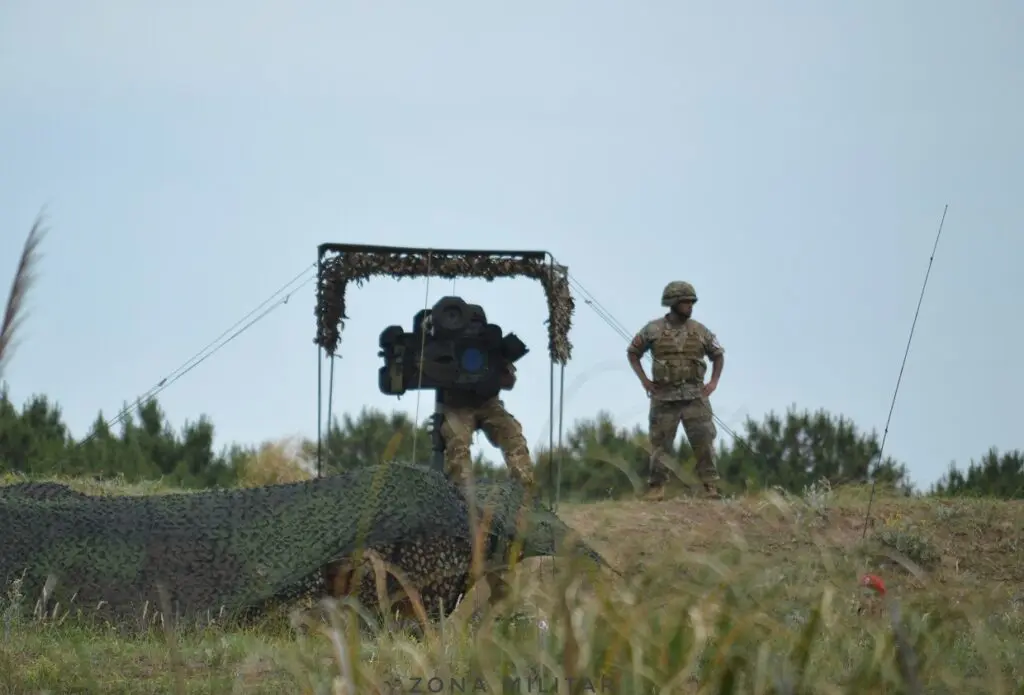In various opportunities, the necessity to restore the capabilities of the Argentine Army’s anti-aircraft artillery has been mentioned, evaluating the current state of the weapon after decades of disinvestment. The harsh reality, with current and past examples serving as comparisons, demonstrates how an integrated air defense system across various layers and rings can effectively deny the use of airspace to a potential adversary. This gains relevance since the recent acquisition of the F-16s for the Argentine Air Force is a necessary condition but not sufficient to utilize, control, and safeguard the national airspace. This must be complemented with a network of ground radar stations, for which Argentina has been making significant efforts with tangible results, supplemented by artillery systems, both cannons and missiles, of various ranges and capabilities to defend military units, population centers and industrial facilities, and critical infrastructures such as nuclear power plants and dams, to name just a few examples.

Against the backdrop of commemorating another anniversary of the struggle for the recovery of the Malvinas Islands, it is necessary to remember and highlight, without going into further details, as it is not the purpose of this text, the role that the anti-aircraft artillery units, both missile and cannon, of the Army and Air Force played in the conflict. Both forces had various artillery systems, in various calibers and ranges, complemented by radar systems, which allowed for successful coverage of Puerto Argentino and its critical installations. The result was demonstrated by the fact that the airport runway was never put out of service, allowing for the vital operation of the FAA’s C-130 Hercules in logistical support tasks. This was partly due to the fact that the anti-aircraft artillery provided an effective defensive umbrella that prevented British fighter-bombers from conducting low-altitude attacks, forcing them to carry out high-altitude bombings, with the reduction in precision that this entailed.
However, the conflict had its price, as a large part of the equipment of the Argentine Army’s and Argentine Air Force’s anti-aircraft artillery units were lost with the end of the Falklands War. Over the more than forty years that followed, despite studies and plans formulated, neither the Army nor the FAA were able to recover part of that equipment, listing only punctual purchases in this segment and currently possessing an inventory of systems that accumulate decades of service.

A breath of fresh air was the recent acquisition from the Swedish company SAAB of the short-range air defense system RBS-70 NG, equipped with its MKII missiles. These are being received by both forces, as well as the Navy, which possessed them in previous versions, while courses for instructors and operators in various units of both forces are being scheduled, with the support of the Marine Infantry and personnel from the Swedish company.
However, as reported by Zona Militar in past articles, the Argentine Army formulated various plans to recover and incorporate capabilities that would allow it not only to engage targets at very short/short distances but also at short/medium distances, both with cannon artillery and with the incorporation of anti-aircraft missile systems with greater capabilities.
As indicated in an article from last September, “Currently, the Argentine Army’s capacity to provide protection to Strategic Value Objectives (SVO) is minimal, lacking equipment that would allow it to provide the lower layer of the anti-aircraft defense system.” Adding, in relation to the evaluated options and possibilities, that: “The first option contemplated the acquisition abroad of all systems, brand new. The equipment included the Skyshield / AHEAD 35 system, RBS 70 NG, the short/medium-range SPADA 2000 system, and Giraffe AMB radars.”

While the second: “The second alternative contemplated various solutions, including the modernization of equipment, local development, and purchase abroad. The project report mentions the modernization of the four Oerlikon GDF 007 Refurbished weapon systems (3 in out-of-service stock and 1 with restricted use), the acquisition of RBS 70 NG and SPADA 2000, as well as the involvement of local companies to develop a radar with similar capabilities to the Saab RBS 70 NG.”
At the time of this brief note, the Argentine Army has not been able to finalize these plans, awaiting political will and resources that would allow the incorporation of a capability that should have been recovered decades ago, since, as we have indicated, the F-16s are not the silver bullet with which to fully recover the aerospace defense system of the Argentine Republic. They are just one element of a set of combined weapon systems that, when put into operation and working together and coordinately, will be able to provide a proper response to the aerial challenges of the 21st century.
*Photographs used for illustrative purposes.
You may also like: After the F-16 – With fewer and fewer operational units, the Argentine Navy needs to incorporate light and medium helicopters













